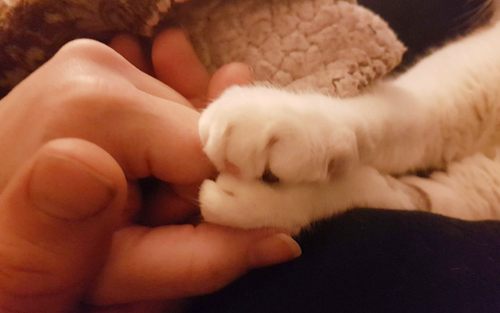What Are Pet Medical Emergencies?
Pets speak to us all the time in their own way. They communicate quite effectively when they want to tell us they are hungry, need to use the bathroom, or just want to say, "I love you." But they can't tell us what is wrong when they aren't feeling well. Pet owners notice illness in changes to routines, uneaten food bowls, and the age-old poop-monitoring technique. But, pet emergencies come in many forms.
At the beginning of an emergency, we often don't know what we are getting ourselves involved in. The owner can see something significant is wrong, but cannot afford the veterinary visit bill, and cannot be seen without money down. We need to get the pet stabilized and then do diagnostic testing to help figure out a diagnosis.
Sometimes pet owners know that their pet needs major surgery or took them to the vet to discover they need more expensive diagnostic testing. In those cases, we have a better idea of what may be coming next. But with any animal, it's always a rush to get them help before it's too late.
Some of the most common emergencies we see are:
Trauma commonly caused by a car accident or animal attack.
For example, Murray, the cat, suffered numerous injuries after being the victim of a hit and run.
Urinary stones or crystals are causing obstructions.
For example, Friday, the cat spent several days in the hospital with a urinary blockage. When he proved unable to pass the stones with a catheter, he needed perineal urethrostomy (PU) surgery.
Bowel obstructions from ingesting a foreign object.
For example, Wheezy, the dog, needed major surgery to remove part of a tennis ball he had swallowed.
Complications from chronic illness, such as heart conditions, thyroid disease, autoimmune disease or cancer.
For example, Mishu Grace suffered from dilated cardiomyopathy and needed intensive treatment to keep her alive.
Birth Defects that are not diagnosed until the animal suddenly collapses or becomes violently ill.
For example, Timothy (Tiny Tim), suffered life-threatening complications from a pocket in his urethra.
Major Surgery hat is needed to save a life or greatly increase quality of life.
For example, Dakota needed specializing surgery to save his eyesight.
Mass Removal that can help cure major illnesses or increase agility.
For example, Armin, the dog needed a mass removed from his leg.
Serious Infections that can lead to severe symptoms and death.
For example, Finnian, the cat almost died from a rare fungal infection.
We have the hard task of meeting pet parents at varying stages of anxiety along the journey to get an animal well. Sometimes they have already spent hundreds or thousands of dollars trying to diagnose or treat a problem before they come to us. In other situations, they are at square one with no place to turn. In every case, the pet needs help quickly. Funding that needed treatment is how your donations save lives.











